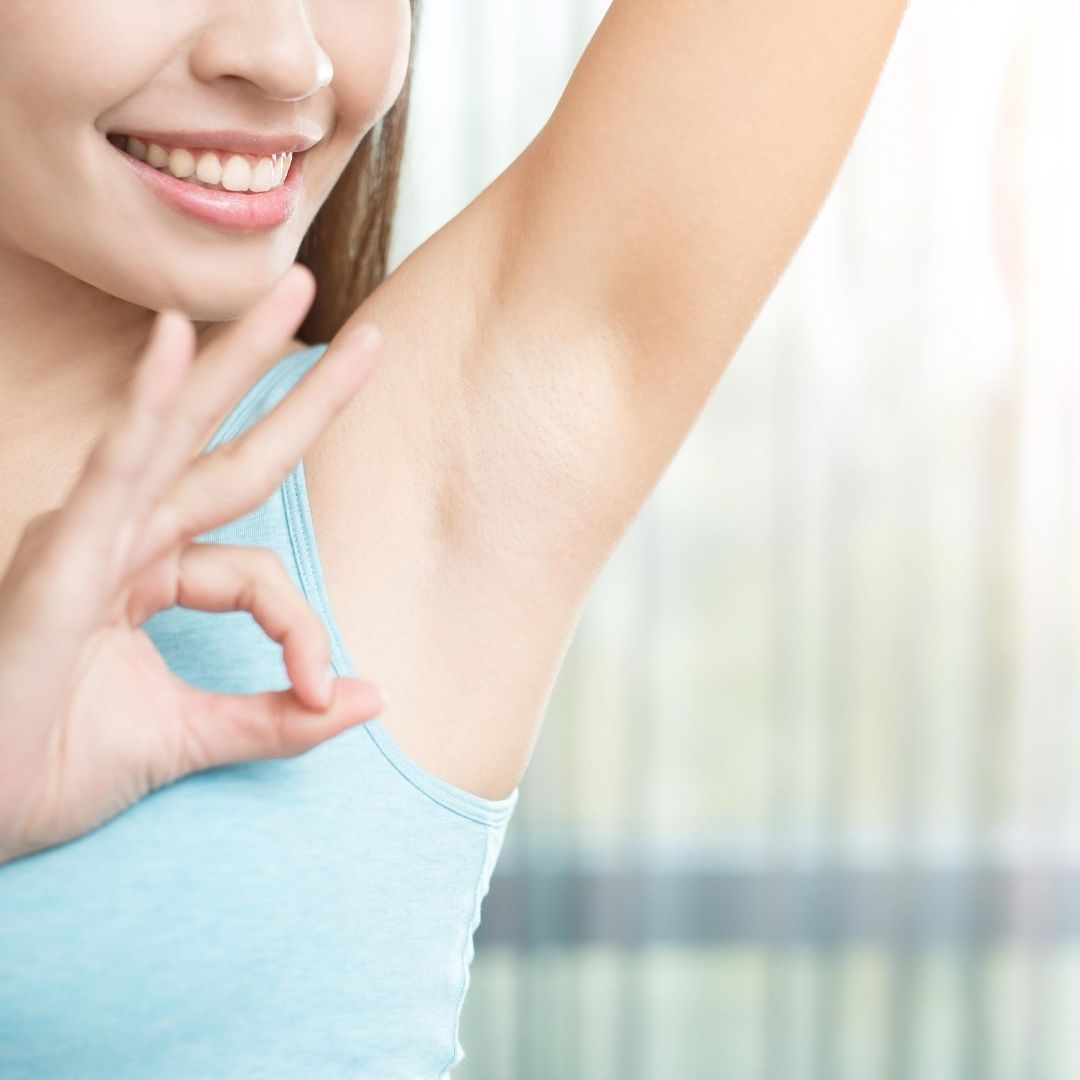Tackling underarm odour naturally - don't sweat it!
Posted by Naturally Safe Cosmetics on 30th Jul 2020
When it comes to our underarms, there are two aspects many of us want to address: odour and wetness.
Sweat consists mainly of water but also contains some salts (hence the salty taste). The main function of sweating is to control body temperature. When the water in perspiration evaporates, this helps to cool our skin’s surface. Sweating usually takes place in hot weather, when we exercise or physically exert ourselves, during times of emotional stress, while eating spicy foods and when we have a fever, e.g. during illness.1
When it comes to odour, did you know that perspiration itself is odourless? Apparently, it’s not the perspiration that's responsible for the unpleasant odour we smell when we sweat but the result of that perspiration combining with the bacteria naturally found on our skin.
The wetness we experience in our armpits comes from sweat glands. We have them all over our body but they are most numerous in our armpits and on our forehead, palms and soles of our feet.1
Image source: Canva
Antiperspirant Vs Deodorant
The words ‘deodorant’ and ‘antiperspirant’ are often interchanged, as if they are the same thing, but they’re actually not so let’s start with a couple of definitions:
- Antiperspirant – a substance applied to the skin, usually to armpits, to prevent or reduce perspiration
- Deodorant – a substance which removes or masks unpleasant smells, in particular body odour
How do antiperspirants work?
Many antiperspirants are aluminium-based. They contain aluminium which mixes with perspiration on the surface of our skin, creating a chemical reaction that forms a precipitate salt. This forms a ‘plug’ of sorts which prevents perspiration from flowing out of the sweat duct. By the way, many commercial brand antiperspirants also include antibacterial ingredients like triclosan, which has since been banned from use in soap products (e.g. hand wash) in the US. Its use is also restricted in the EU. Parabens, a group of preservatives often found in cosmetics and personal care products, can also be found in antiperspirants and have their own history of controversy when it comes to safety considerations.
How do natural deodorants work?
Natural and organic deodorants can be an effective way to address underarm hygiene without the use of aluminium and other potentially harmful chemicals. They usually include skin nurturing ingredients like aloe vera and some also include hydrating ingredients like coconut oil and shea butter. Their naturally derived ingredients are specially chosen for their ability to tackle underarm odour and reduce the feeling of wetness associated with perspiration. Here's how they do it:
Odour – natural deodorants are designed to combat the bacteria that cause the odour associated with underarm perspiration while still allowing the perspiration to continue. Most natural deodorants do this with sodium bicarbonate (also referred to as bicarb soda or baking soda). Sodium bicarbonate has been around for centuries and has long been used in cooking, cleaning and odour prevention.2 These days, its antibacterial properties makes it a popular choice in personal care products, including natural deodorant formulas.
In addition to sodium bicarbonate, natural deodorants often include essential oils, many of which are also known for their antibacterial properties and which also provide the product with a natural fragrance that can assist with masking odour.
Wetness – when it comes to tackling the wetness associated with sweating, natural deodorant products often include ingredients designed to absorb moisture like cornstarch, tapioca starch, arrowroot and kaolin clay.
What about sensitive skin?
Some people with sensitive skin find that the sodium bicarbonate in natural deodorants causes skin irritation. Fortunately, most natural deodorant brands offer a sensitive skin alternative which usually substitutes the sodium bicarbonate with magnesium hydroxide. Magnesium hydroxide offers similar protection to sodium bicarbonate but is gentler on the skin. Sometimes, it’s the essential oils which some people find irritating to their skin. If this is you, you have the option of fragrance free deodorants. If you’re super-sensitive, you can opt for a deodorant that's both bicarb free and fragrance free.
So, if you're switching to a natural deodorant, where do you start?
Everyone’s body is different and what works for one person may not work for another and vice versa. The good news is that these days we really are spoilt for choice. Whether you prefer roll-on deodorants, spray on deodorants, stick deodorants or cream formulas in a jar, there’s something for everyone. I suggest finding a fragrance you like in your preferred option and giving it a go. If you have sensitive skin, try an unfragranced option or a magnesium hydroxide based formula.
1 betterhealth.vic.gov.au
2 healthline.com
Disclaimer:Neither the author, nor Naturally Safe Cosmetics, are health care professionals. Any information or advice in this article is of a general nature only and not intended to diagnose, treat, cure or prevent any disease. For medical advice regarding your own personal circumstances, we recommend you contact your GP or other health care professional.



